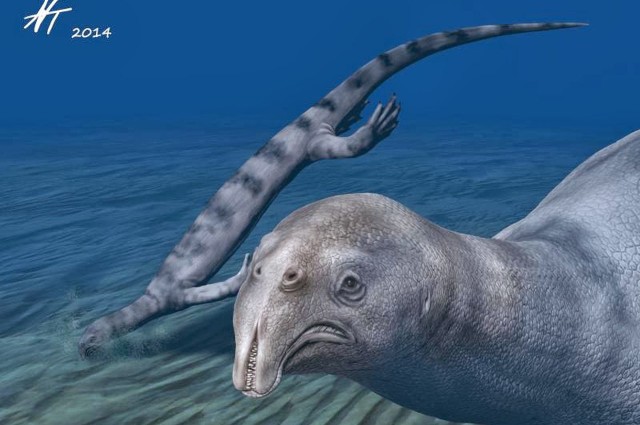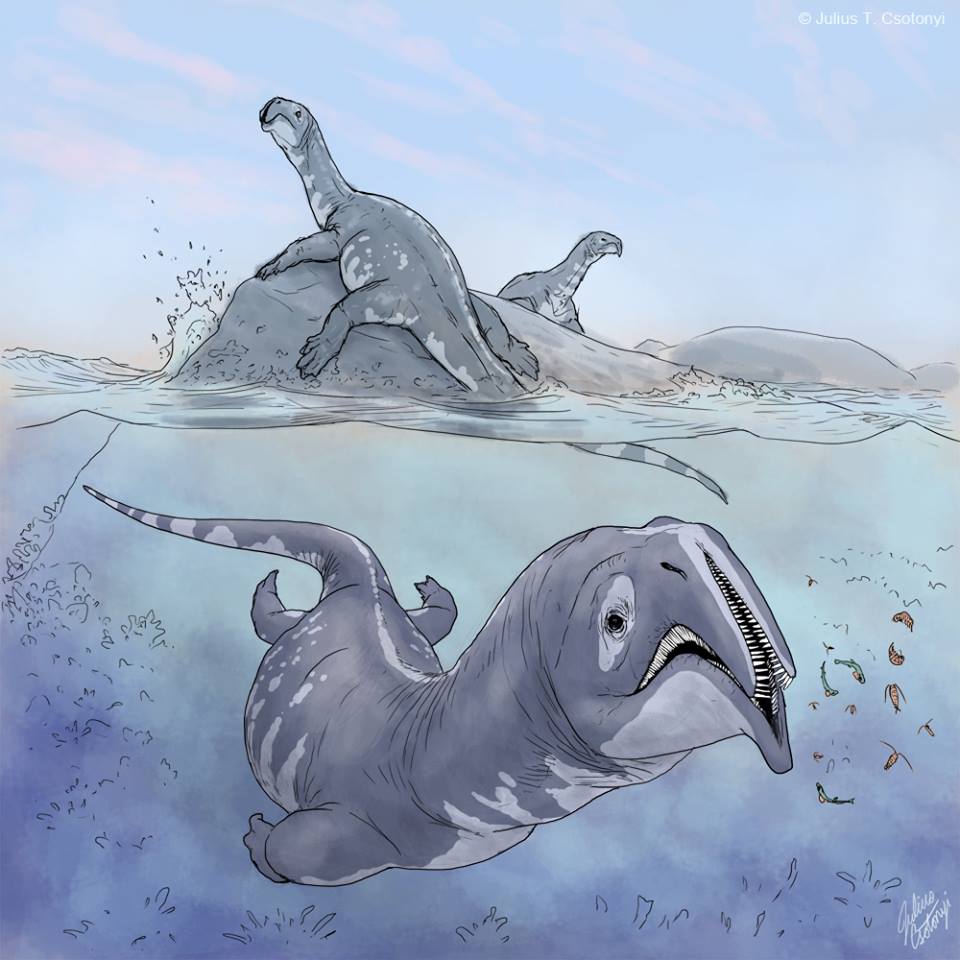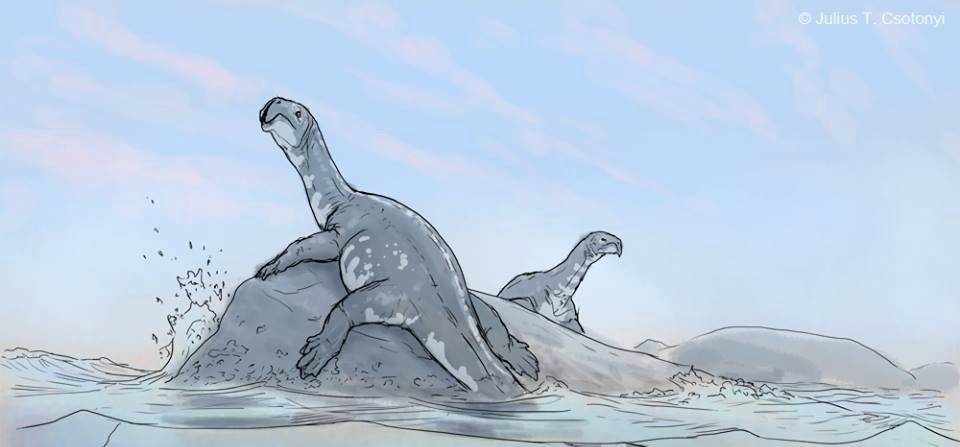A Bizarre New Reptile Fossil That's 245 Million Years Old Has Been Discovered In China
The roughly 245 million year old marine reptile is beautifully preserved.
The fossil record is replete with wonders, and the latest prehistoric creature Atopodentatus unicus will leave you utterly astonished
Paleontologists in China have uncovered fossilized remains of an extremely odd-looking reptile that lived in the middle Triassic, 247-242 million years ago. The discovery, which represents a brand new species and genus, was made by a team led Xiao-Chun Wu and the results were published in Naturwissenschaften.
This particular specimen was recovered from the Guanling Formation in Southwest China. The fossilized skeleton was nearly complete, though the right side of the skull was missing. From tip to tail, the organism was about 3 meters (9 feet) long.
Dr Xiao-Chun Wu and his colleagues named the new prehistoric creature Atopodentatus unicus and suggest it belonged to a group of reptiles called the sauropterygians
“Generic name is derived from the Latin atopo for the peculiar dentition and dentatus for teeth; the specific name is derived from the Latin unicus for its unique morphology,” the scientists said in a paper published in the journal Naturwissenschaften.
The most distinguishing characteristic of Atopodentatus unicus is its bizarre mouth
On each side of the mouth, the reptile had about 35 small needle-like teeth in the front of the upper jaw, about 140 small needle-like teeth in the rest of the upper jaw (at least 100 in the horizontal portion and around 35 in the vertical portion), and more than 190 teeth in the lower jaw (about 100 in the horizontal portion and 90 in the shovel-headed anterior end).
The teeth were covered by a layer of enamel. According to Dr Wu’s team, Atopodentatus unicus may have been adapted to a way of bottom-filter feeding in water.
Even the name of the genus, Atopodentatus, translates into “disturbing teeth” while unicus describes the unique way the teeth are arranged in the skull. Though it looks absolutely horrifying, the teeth were much too thin and brittle to bite and chew large prey.
Scientists speculate that the set-up of the dentition was an important adaptation that allowed Atopodentatus unicus to filter feed at the bottom of the sea
The different shapes of the jaw probably helped scoop up food that the teeth filtered out. These animals most likely fed on sea worms and other tiny invertebrates or microorganisms



